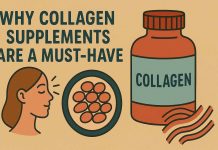Mold can pose serious health risks, triggering allergies, respiratory issues, and infections. It thrives in damp, poorly ventilated spaces, often unnoticed until damage occurs. To stop mold formation, control moisture, enhance ventilation, and quickly fix leaks. Regular inspections and professional remediation are essential to maintaining a healthy, mold-free home.
Understanding the Causes of Mold
Understanding the Causes of Mold
Mold is a silent invader that thrives in areas with persistent dampness, often without immediate notice. Its growth is fueled by moisture, making it a common issue in areas with leaking pipes, flooding, and natural humidity. Porous materials like wood, drywall, and fabrics are particularly susceptible to mold growth, as they absorb and retain moisture, allowing it to flourish out of sight. To effectively combat mold, understanding its causes is crucial, as it not only helps undo current issues but also helps prevent future infestations. Resources and strategies for mold removal can be invaluable in tackling these problems, offering long-term solutions that protect your home and health.
Signs That Mold Might Be Invading Your Home
Identifying mold early might save you considerable stress and expenditure. A musty odor is usually one of the first indicators, memorable yet elusive, often hovering without a visible source. Visually, mold might present as black, green, or even white fuzzy spots, sometimes blending with the surfaces it infests. However, the difficulty in managing molds stems from their ability to hide within walls, under wallpaper, or behind tiles, making them quite insidious.
Given their covert nature, molds can linger undiscovered until they have proliferated extensively, causing structural damage and health risks. To help homeowners better recognize and manage mold, the extensive resources offered by the National Institute of Environmental Health Sciences are intended to give them the necessary information and instruments.
Health Risks Associated with Mold Exposure
Mold is a severe threat to health that can lead to allergies, chronic fatigue syndrome, and respiratory problems. Exposure can cause sneezing, skin rashes, red eyes, and chronic fatigue syndrome or headaches. The risks are especially severe for vulnerable groups like children, older people, and those with compromised immune systems. Therefore, it’s crucial to promptly monitor and remove mold from living environments to prevent further health risks.
Steps to Prevent Mold Growth
Preventing mold is vastly more effective than treating it. The key to prevention is maintaining a dry and ventilated living area. Humidity should be carefully managed, ideally with the help of dehumidifiers, particularly in naturally moist areas like bathrooms and basements. Act swiftly to repair leaks in roofs, walls, or plumbing to prevent water accumulation, which is crucial.
Additionally, using mold-resistant products when building or renovating can offer a line of defense. For instance, mold-resistant drywall, paints, and sealants can be used in areas prone to moisture, reducing the chances of mold development. Regular inspections of visible areas and hidden spots are vital in maintaining a healthy, mold-free environment.
Safe Home Remedies for Mold Removal
Minor mold problems can often be handled with safe and effective household items. White vinegar, with its natural acidity, is a potent mold remover, eradicating spores from hard surfaces with a simple application. Baking soda, recognized for its gentle abrasiveness, can be combined with water to form a paste that eliminates mold and absorbs odors.
Tea tree oil is another excellent natural solution known for its fungicidal solid properties. To prevent breathing in mold spores or direct contact with them, it is crucial to handle do-it-yourself eradication carefully. Ensure adequate ventilation and use protective clothing, such as gloves and a mask, at all times.
When to Hire Professional Mold Remediation Experts
Professional mold remediation companies are essential for identifying and eliminating mold in easily overlooked areas. They have the equipment and expertise to provide comprehensive solutions, advise on preventive measures, and address future outbreaks. Your home’s investment in its inhabitants’ long-term health is justified by their experience, client reviews, and work guarantees. Professional remediation costs are warranted by their comprehensive care, including cleaning, removal, and preventive measures.
How Regular Home Maintenance Can Keep Mold at Bay
Routine home care is an essential part of preventing mold. Regularly cleaning gutters and downspouts ensures rainwater is discharged correctly away from the home. Inspecting and maintaining roofing, window seals, and plumbing systems prevents leaks and moisture build-up that molds thrive on.
Establishing a maintenance schedule can help track necessary upkeep tasks and ensure they aren’t overlooked. The EPA’s guidelines offer additional suggestions for maintaining a home free from harmful mold.










